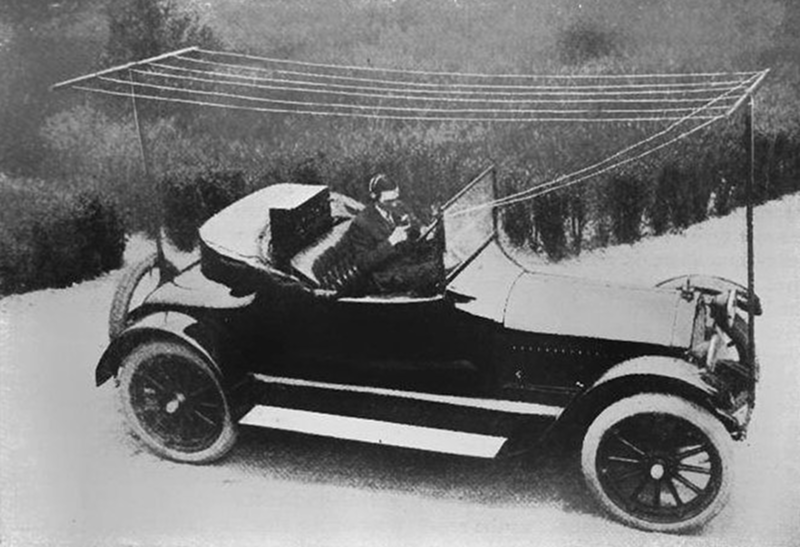You used to be able to tell a die-hard ham radio operator on the road by the number and length of antennas protruding porcupine-like from their vehicle. There are still some mobile high frequency operators that have respectable car-mounted antenna farms, but they have nothing on Alfred H. Grebe. In 1919, he fitted a medium wave transmitter in his car that operated around 2 MHz. Since it needed a very large antenna, Grebe rigged a wire antenna that looked like a clothesline between the two bumpers. Obviously, you had to stop, set up your antenna, and then operate — you couldn’t talk and drive. But this may have been the world’s first automotive radio setup for voice communication.
The car had a separate battery for the radio and a dynamotor to generate high voltage for the tubes. Although many radio enthusiasts found ways to add receivers to their cars in the 1920s, it would be 1930 before Motorola made radios especially for cars in production quantities.
That wasn’t what Grebe was most famous for, though. He worked as a ship’s operator After making a few receivers for friends, he decided to open up a business. Grebe radio, though, is hardly a household name today. But he was best known for setting up radio stations, including founding the station that would eventually become WCBS, often called the father of news radio.
We always enjoy learning about radio pioneers including Edwin Armstrong and Reginald Fessenden. This is certainly a far cry even from the old mobile telephones.
















I suspect that initially the casual observers wondered why there was a clothesline on top of that sedan. But the few early techies that knew it was an antenna probably had their minds blown at the idea of mobile radio communication. An entire radio station in a car, oh my!
Rumor has it that Mr. Grebe also ran a butcher shop in town and would often hang extra cuts of pork on the antenna to dry and cure as he was driving. And thus, he became the first ham radio operator.
🤣
Your response is even funnier after seeing your Hackaday username!
Was that safe? Oh well I’m sure he wore seatbelts.
??
It seems to react to any new names entered as “spam”, but if the same name has passed the moderation multiple times, it lets it through without delay. They seem to be scoring the names based on how many unapproved words or phrases they say, to the point that you can basically prevent someone from talking by saying nasty things. After that they’ll always be stuck in moderation.
Also, by this point it’s perfectly clear that the anti spam filter is not just responding to spam, but to opinions and topics that they consider to be verboten.
It also means if someone wanted to spambomb the site they would not have to change the email address and just use random names which is garbage for a spam filter
I don’t know. I think you’re underestimating the power of the humans in the loop.
In 1919 you would have been run out of town on a rail for a joke like that, sometimes the old ways are better.
Have you guys and gals done a post about upgrading automobiles from 6v to 12v?
That would be an excellent topic for Hackaday!
Perhaps Lewin Day could write it, as he seems like a real car guy.
Then we need an article on switching your car from positive to negative ground.
Another great idea!
Modern cars have 800V battery packs, which should be high enough for the tubes.
The source of this photo is the August 1919 edition of Radio Amateur News. A PDF is widely available.